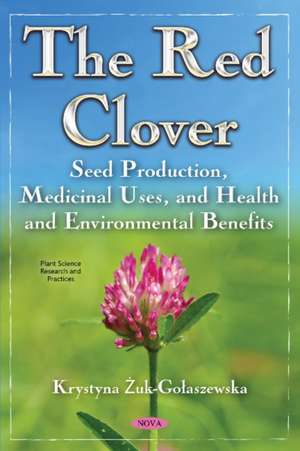Red Clover: Seed Production, Medicinal Uses, & Health & Environmental Benefits
Autor Krystyna Żuk-Gołaszewskaen Limba Engleză Paperback – 9 sep 2017
Preț: 512.59 lei
Preț vechi: 557.16 lei
-8% Nou
Puncte Express: 769
Preț estimativ în valută:
98.11€ • 102.04$ • 82.22£
98.11€ • 102.04$ • 82.22£
Comandă specială
Livrare economică 17-24 februarie
Preluare comenzi: 021 569.72.76
Specificații
ISBN-13: 9781536117875
ISBN-10: 1536117870
Pagini: 70
Dimensiuni: 155 x 230 x 11 mm
Greutate: 0.2 kg
Editura: Nova Science Publishers Inc
Colecția Nova Science Publishers Inc
ISBN-10: 1536117870
Pagini: 70
Dimensiuni: 155 x 230 x 11 mm
Greutate: 0.2 kg
Editura: Nova Science Publishers Inc
Colecția Nova Science Publishers Inc
Cuprins
Abstract; Botanical Description; Seed Production; Medicinal Uses & Health Benefits; Environmental Aspects; Future Prospects & Strategies; Index.
